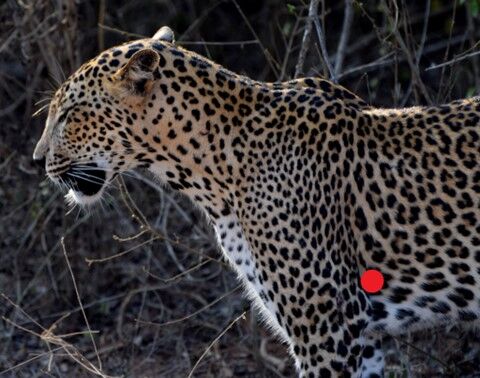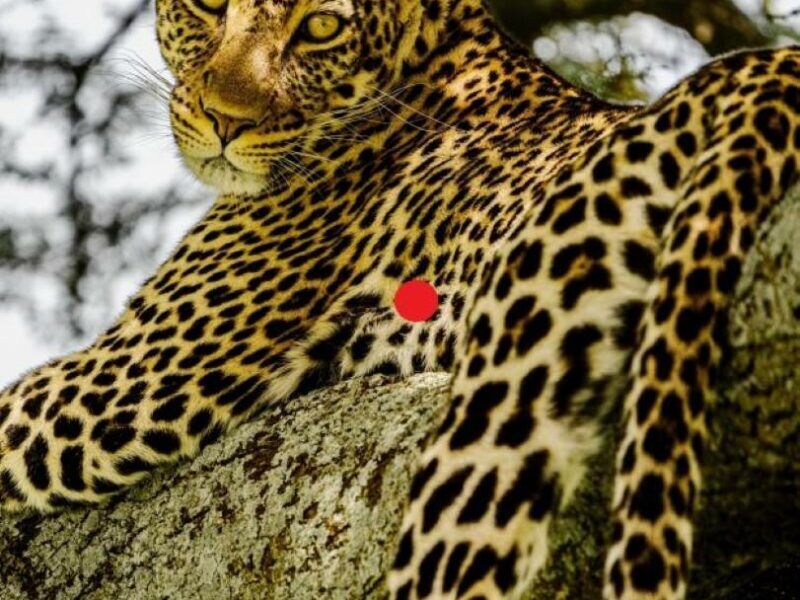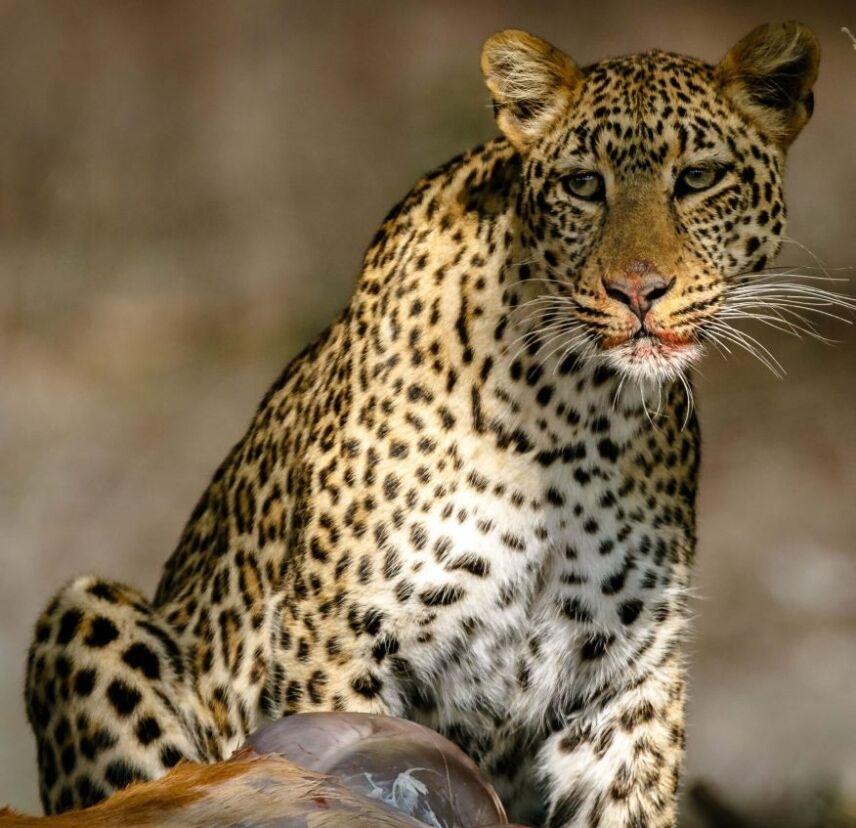Contrary to some misinformed opinions, leopards are not an endangered species. Internationally, we have uneducated “greenies,” “anti-hunters,” and animal rights groups claiming that they are all fighting to save the African leopard. The proposed shut-down of hunting leopard in Africa, by saving the leopard from trophy hunters, certainly will not save the leopard, but most certainly would do considerable damage to leopard wildlife management. This methodology and thought process is illogical and based on misinformation.
[DYNAMIC-BLOGTABLEOFCONTENT]
Key Takeaways
- Game hunting generates substantial monies that are used towards conservation, employment, and anti-poaching units, to protect Africa’s wildlife.
- Locals are incentivized to maintain Indigenous habitats and protect the local leopard populations.
- Dangerous game hunters often target specific problem animals, such as leopards, that are killing livestock and pets.
- Leopard hunting in Africa is well maintained and regulated, with quotas issued by the local governments.
- Not all leopard hunting expeditions are successful, leading to actual trophies harvested being below the government issued quotas.
- CITES lists species that may be traded, with more than 180 countries being part of this convention.
- Hunting of Africa’s Big 5, is strictly regulated to ensure the long term survival of these animals.
- The pricing of a leopard hunt varies per country, and is dependent on several factors, including location and method of hunting.
- Leopard hunting expeditions can start from as little as US$18,000 and reach up to US$100,000.
- These safaris include basic costs related to the planning and harvesting of the leopard trophy, as well as items such as transport, the leopard trophy fee, baiting fees, services of professional staff, laundry, accommodation, meals, soft drinks, hunting license and permit, as well as the field prep of the trophy.
- Items excludes from hunting safaris usually include domestic charter flights to reach more remote hunting locations, any additional hunting days, excursions, gratuities for staff, as well as the dipping, packing, and shipping of trophies.
- Leopards are usually hunted in two ways, either with hounds, or via baiting.
- The minimum legal requirement for rifles in most countries, when it comes to dangerous game hunting is a .375 rifle loaded with 300 grains.
- Precise shot placement when leopard hunting remains critical, as a wounded leopard is seen as the most dangerous animal worldwide and not something you wish to meet!
- Near the end of the hunting season, tags are often issued for discounted hunts. Keep an eye out for these value-for-money options. Note that the timing of the hunt might be very close to your booking date, so hunters need to be flexible to take advantage of these discounted hunting adventures.
Hunting Leopard in Africa has many benefits
Big game hunters generate substantial cash flow, used towards habitat conservation, funding of anti-poaching units, and creating employment opportunities.
Local villages share in the hunting fees generated. This means African locals are incentivized to maintain indigenous habitat and protect the leopard populations. In Africa, when habitat becomes grazing for domestic animals, all wild animals are in danger of eradication.
Big game hunters on a hunting safari often work with the outfitter and the local villagers to target specific problem animals. Leopards will hunt, attack, and kill livestock and pets (leopards love eating hounds). Instead of the leopard being killed in retaliation by the locals, the leopard hunt will bring in additional revenue streams for the community.
Hunting Leopard in Africa: Sustainability of Leopard Populations
Hunting Leopard in Africa is sustainable, of this fact, there is no question. Leopard hunting is managed and regulated based on scientific data collection and input from leading authorities, local communities, and those in the tourism sector. Leopard hunting quotas issued by local government are based on surveys, with certain criteria having been put in place. These include criteria such as the leopard’s size, age, and sex.
When it comes to hunting leopards, hunters are often not successful. As the Africa hunting trip is often limited to a certain period of days, the leopard cannot always be successfully tracked and hunted during that time limit. The result is that a percentage of the leopard game hunting safaris are not concluded with a positive result. Actual leopard trophies harvested end up below government quotas.
A Leopard Hunting Safari: Trade in Leopard Regulations
CITES, otherwise known as the Convention of International Trade in Endangered Species was formed in the 1960’s, the function is to list species that may be traded. These permits are issued when deemed that hunting these species is not detrimental to the species’ survival in the wild. When it comes to hunting leopard in Africa, the issuing of a limited number of permits highlights the sustainability of leopards being legally hunted. 184 countries are currently parties to the convention.
Regulated big five hunting in Africa for legal harvesting of animals is imperative for the long-term survival of these magnificent animals.
Hunting leopard in Africa, how much will a hunting safari cost?
A big game hunting safari aimed at hunting leopards in Africa is an expensive business. An African big game safari for dangerous game hunting can cost tens of thousands of US Dollars depending on location and the method of hunting.
Prices fluctuate between the various African countries. The most affordable African hunting trip will be in Namibia, and a leopard safari costs US$18,000-24,000. Countries such as Mozambique, Zambia, and Zimbabwe will offer a leopard hunt between US$26,000-35.000.
Tanzania is the most expensive country for leopard hunting, and an African big game safari will cost between US$50,000-100,000.
What will the Leopard Game Hunting Safari cost include?
An African hunting trip for leopards will cover the basic costs relating to the planning and harvesting of the trophy and will include line items such as:
An African hunting trip for leopards will cover the basic costs relating to the planning and harvesting of the trophy and will include line items such as:
– Ground transport from the entry point.
– Leopard trophy fee (will be refunded if the trophy is not harvested).
– Baiting of the leopard. In some instances, should they require pre-safari baiting, this comes at an additional cost.
– The services of the staff include professional dangerous game hunters, trackers, chefs, skinners, and cleaning staff.
– Daily laundry service
– Hunting license and permit
– Field preparation of the leopard trophy (skinning, tagging, salting, drying) and trophy transportation to the taxidermy.
– Meals and soft beverages
What will the Leopard Game Hunting Safari exclude?
– Domestic charter flights, if required, to remote game hunting locations.
– Any additional days if the safari gets extended are calculated at an extra daily rate.
– Dip, pack, and shipping of trophies.
– Any excursions via third-party service providers.
– Gratuities for any deserving camp staff for going the “extra mile.”
Hunting Leopard in Africa: Hunting Methods
When on a big game hunting safari for leopards, there are two main methods of hunting leopards, firstly by baiting them which is normal practice, or in some countries, leopard hunts using hounds.
Standard practice on a 14-day game hunting safari would be to pre-bait for the leopard.
Leopard Hunting: Using Bait
A few days before the commencement of the African big game safari, a selected area will be pre-baited. Readily available antelope, such as impala, springbok, and kudu, will be used. In some areas, this may even include donkeys. Zebra, due to the high fat content in the meat is also a favorite and if available, will be used. Due to this higher fat content, the bait will last longer as the meat will remain “fresher.” It will not spoil as quickly.
The area will be chosen based on feedback from trackers who have identified the tracks of a large male leopard.
A mature male’s territory may be large covering many acres. Factors such as nearest watering points may be considered when choosing bait locations.
Once a suitable tree has been identified, the bait will be placed at a height where scavenges like hyenas cannot reach. If lions are also in the area, the bait must be out of a lion’s grasp. A lion cannot climb a tree like a leopard.
The area surrounding the bait will also be “dragged” with the likes of antelope intestines from fresh tracks or a water point to the bait. The leopard must be able to find the baited area, this aspect of leopard baiting is critical to ensure success.
The size of the carcass is also critical as the leopard cannot eat the entire bait in a single feeding. The leopard must be able to come back and feed again.
These baits must be checked daily for a “potential” hit. Many outfitters make use of trail cameras to monitor nocturnal bait activity and try to get a visual of the cat. This can assist with determining the age and maturity of the cat. Leopards younger than six years of age cannot be legally hunted.
Only once there has been a successful “hit” on the bait and the professional hunter makes the call that this specific cat is to be targeted, a temporary blind be constructed. The blind will normally be constructed at between forty and eight yards, depending on factors such as topography, visibility, and potential wind movement.
Leopard Hunting: Hunting with Hounds
Hunting leopard in Africa with hounds is primarily conducted in Mozambique and Zimbabwe. Many big game hunting outfitters will argue in favor of hunting leopards with hounds. It is argued that hunting leopards with hounds is the most natural and sporting method of hunting.
Leopards certainly are not afraid of hounds, but getting into a tangle with a pack of hounds may cause the leopard to get injured, thus potentially affecting the leopard’s future ability to survive while healing.
Hunting leopards with hounds is fast-paced and adrenaline-filled. Miles through harsh terrain are covered on foot, sweat being the name of the game. On a leopard hunt with hounds, there are far more things that can go wrong compared to sitting at night in a blind waiting for the leopard to move into position for ultimate shot placement.
The hunting safari will also be a better position to decide as to whether the leopard is a trophy or not based on the visual when treed. This reduces the risk of shooting an underage male or accidentally a female.
Hunting Leopard in Africa: Choice of Rifle Caliber
Before booking your game hunting safari, always check the legal minimum firearm requirements in the destination country when it comes to an African safari. There are a few differences between the countries but the minimum legal requirement in most countries is a .375 rifle loaded with 300 grains.
When it comes to leopard hunting, these predators are a soft-skinned animal and a well-placed bullet from thirty calibers will bring down this cat. Shot placement is critical as an immediate follow-up shot on a leopard is not always available to the hunter.
Leopard Hunting in Africa: Ultimate Shot Placement
When hunting leopard in Africa, the choice of rifle caliber will not be a factor if the shot placement is not on target. A wounded leopard is exceptionally dangerous, and the cat will not hesitate to attack members of the game hunting safari.
Africa’s age-old saying is one hundred stitches for every second that the leopard in you. When attacking their prey, leopards use their back legs armed with sharp claws in the same motion as a cyclist peddling a steep mountain incline during the Tour de France. The circular motion of the leopard’s back legs will rip out a big game hunter’s intestine with the intent to do grievous bodily harm and for the prey to “bleed out.”
Pound for pound, a wounded leopard is the most dangerous animal in the world. A male leopard, often referred to as an “old Tom,” can weigh up to 200 pounds. When wounded, the leopard can charge at the members of the hunting safari at a speed of up to 36 miles per hour!
When the decision has been made that the leopard is mature and of age, the entire game hunting safari efforts and energies come down to this one moment, where do we hit him?
Leopards do not always present with the “perfect shot.” They may be leaning over a bait placed high in a tree on a horizontal bait, or stretching up to reach the bait. The position of the leopard’s heart and other vitals change within the body’s capacity depending on the movement. See our Shot Placement for Hunting Big Cats in Africa for more about shot placement.
The Frontal Brain Shot
While hunting leopard in Africa, this is not a shot that your professional hunter will advise you to take. While the leopard skull is relatively soft, the brain represents a small target, making the shot difficult, taking into consideration the head placement and poor lighting conditions.
A frontal brain shot will also ruin your leopard trophy.
The Broadside Shot
This is the shot that your professional hunter will advise the hunter to take. The heart and lungs present a bigger target than a grain shot.

A leopard is not an ungulate. The heart will sit slightly further back. The bullet must be placed behind the front shoulder. Too far forward towards the neck will result in the vitals missed. If the hunter shoots a little high, the result will still be a double lung shot, causing the leopard to expire humanely.

The African Big Game Safari
When hunting leopard in Africa, the actual game hunting safari will be for 14-21 days. This is a long time to spend every day checking baits, waiting for the perfect cat to hit a bait. When budgeting and planning for the Africa hunting trip, it would be wise to include a few other target species for the plains game, such as kudu, sable, roan, the Tiny Ten, etc. The hunter will have a substantial amount of “free time” during the days. Big game hunting during daylight hours, depending on the leopard hunting location, can also include crocodile, hippo, and, of course, a trophy Cape Buffalo.
Hunting Leopard in Africa: Discount Hunts
- Should the African outfitters not sell all their leopard hunting tags before the end of the hunting season, often discount hunts for leopards become available.
- The leopard hunts can become available at a reduced cost as with government tags, the attitude towards the African outfitters is “use it or lose it.” Towards the end of the season, the African outfitter will then have no choice but to try to market the available leopard tags as discount hunts.
- To secure one of these discount hunts, the hunter would normally need to be able to book the Africa hunting trip at short notice.
- When it comes to marketing the discount hunts, booking agents such as Game Hunting Safaris will normally be used for their online presence.
Frequently Asked Questions
What is the most difficult animal to hunt in Africa?
As one of Africa’s Big 5, along with the rhino, elephant, lion, and Cape buffalo, the leopard is seen as one of the most difficult animals to hunt in Africa. They are renowned for their cunning, elusive behavior and that, together with their exceptional camouflaging skills, ensures that they are difficult to hunt. Leopards are typically hunted using the bait and blind method, while some countries do allow leopard hunting with hounds.
Where can I hunt leopards in Africa?
Zimbabwe, Mozambique, Namibia, Tanzania, and Botswana are known as excellent leopard hunting destinations.
Can leopards climb trees?
Leopards are known for being extremely agile creatures and can climb a tree with ease. This is one of the spots they like to hide in, to watch and target prey.
Are leopards nocturnal?
Yes, this member of Africa’s Big 5 is nocturnal, preferring to sleep and rest during the day, while hunting at night.
How fast can a leopard run?
Leopards can reach speeds of up to 36 miles per hour. They are also renowned for their exceptional climbing abilities and are extremely agile.
How aggressive are leopards?
Leopards are not a member of Africa’s Big 5 and Dangerous 7 in vain! Members of the hunting community also know that a wounded leopard is the most dangerous animal there is. It will defend itself to the death, whether its own or its assailant’s. Leopards are cunning and elusive creatures that are extremely aggressive and dangerous.
Can leopards swim?
Yes, not only can leopards swim but they also enjoy being in the water. As a member of the cat family, this may seem a bit unusual, but these felines are great lovers of water and are quite good swimmers.
Last Comments
No big game hunting safari should exclude the leopard. Not only do these dangerous cats make exceptional trophies, but wildlife management from a consolidated perspective needs the commitment and revenue generated by international hunters aimed at hunting leopard in Africa.
Author: PC van Wyk
